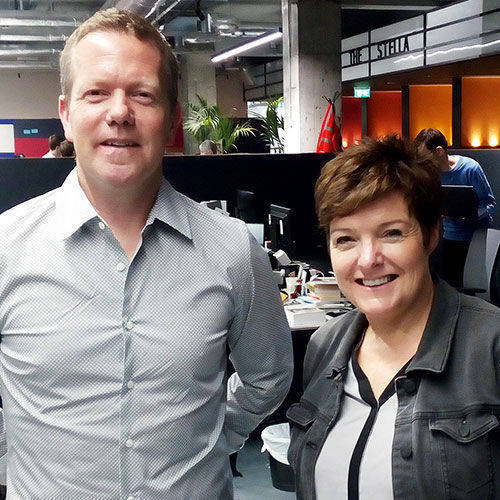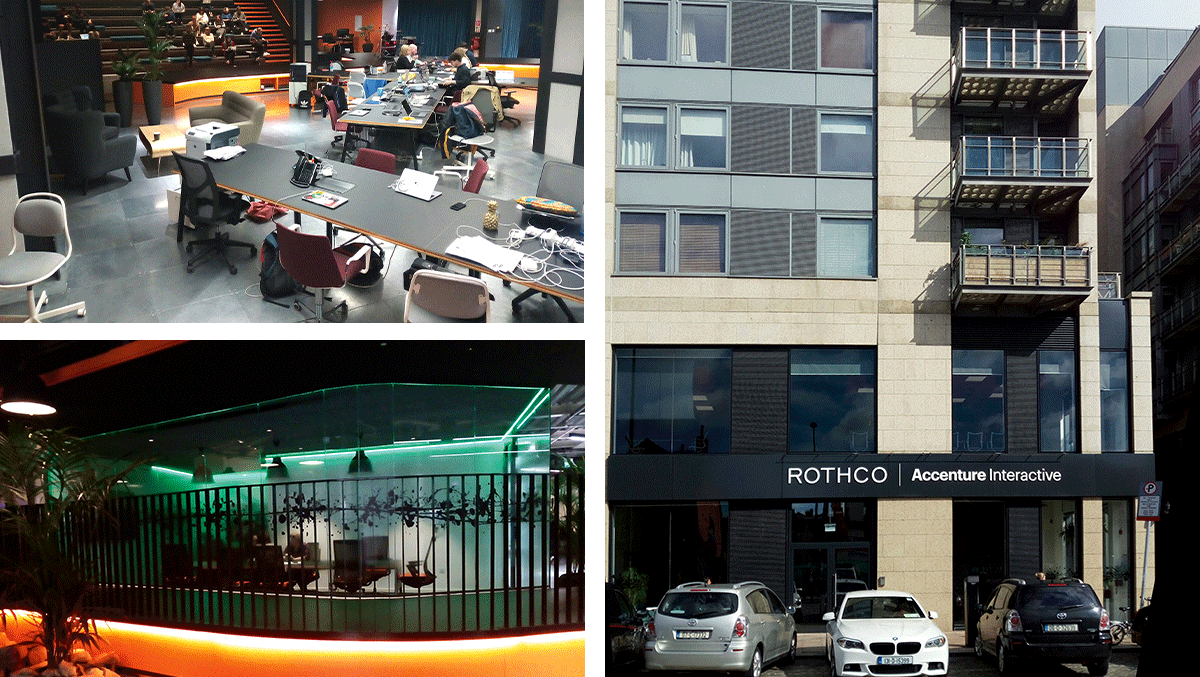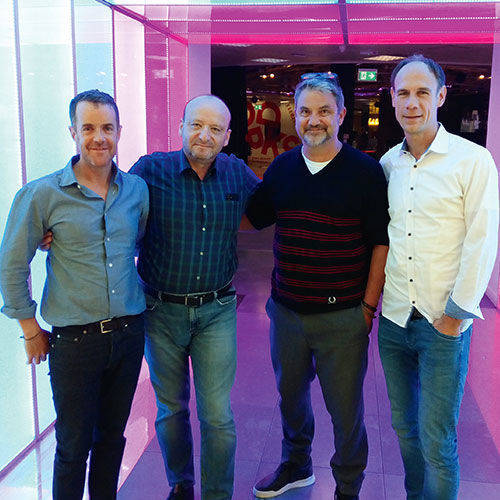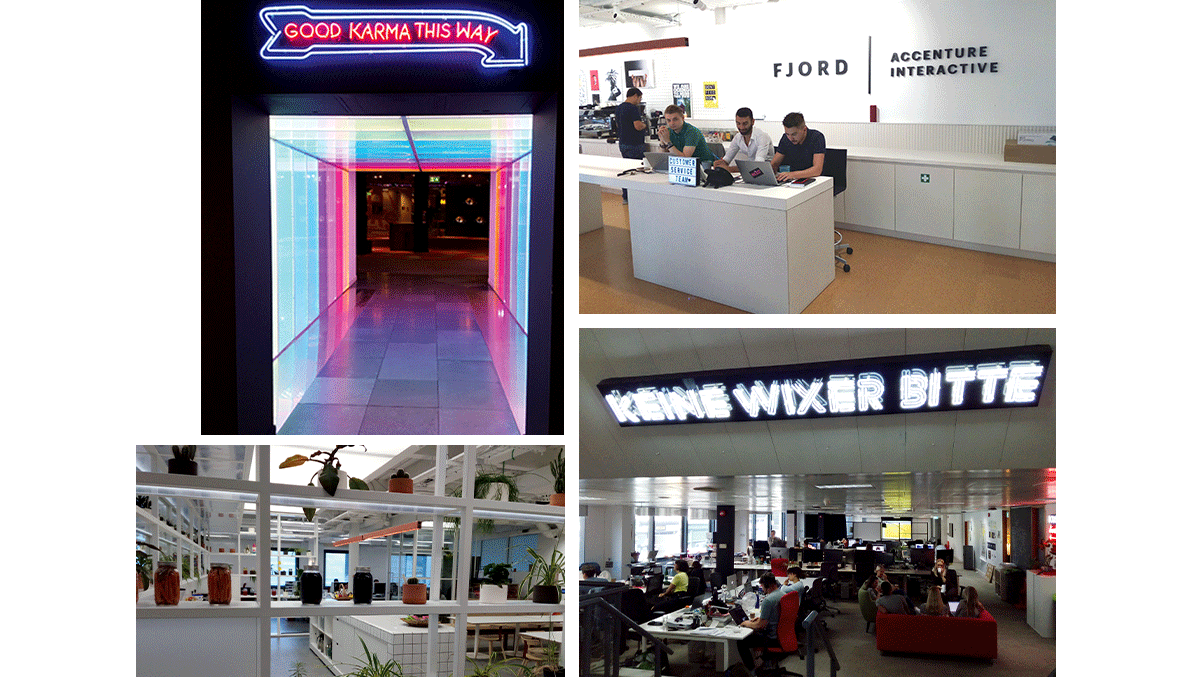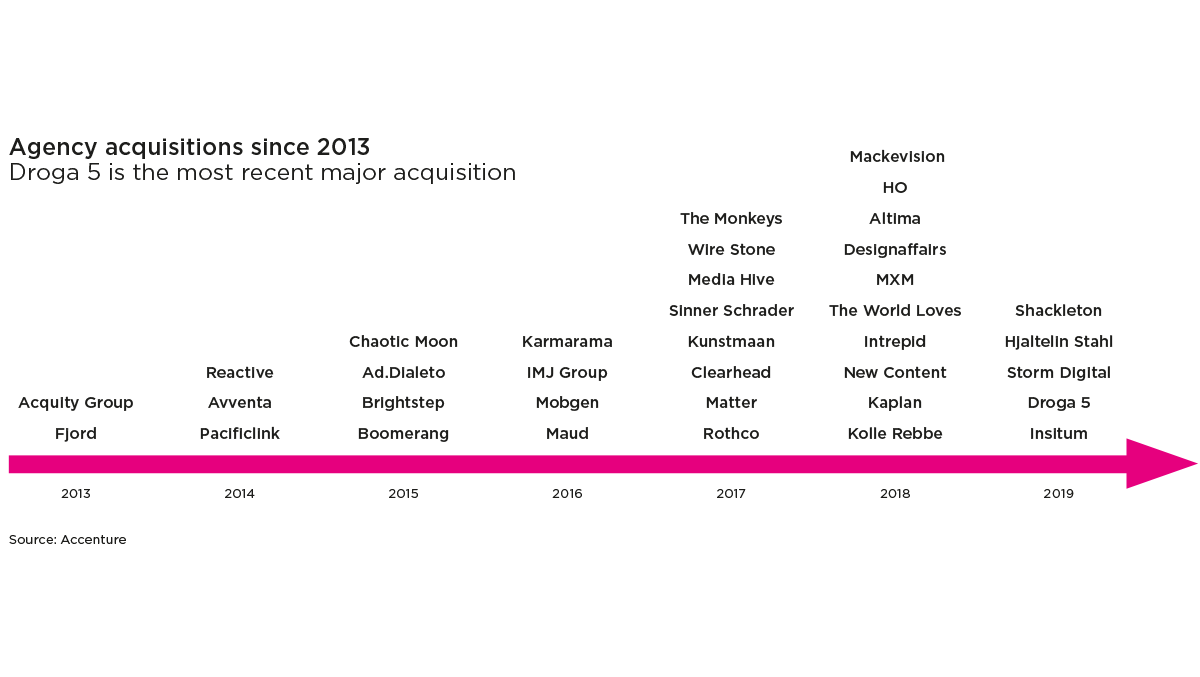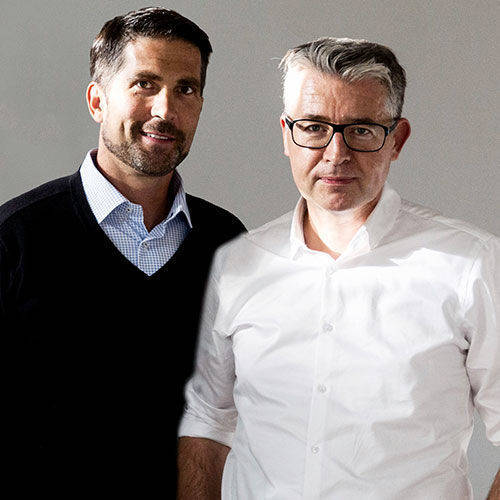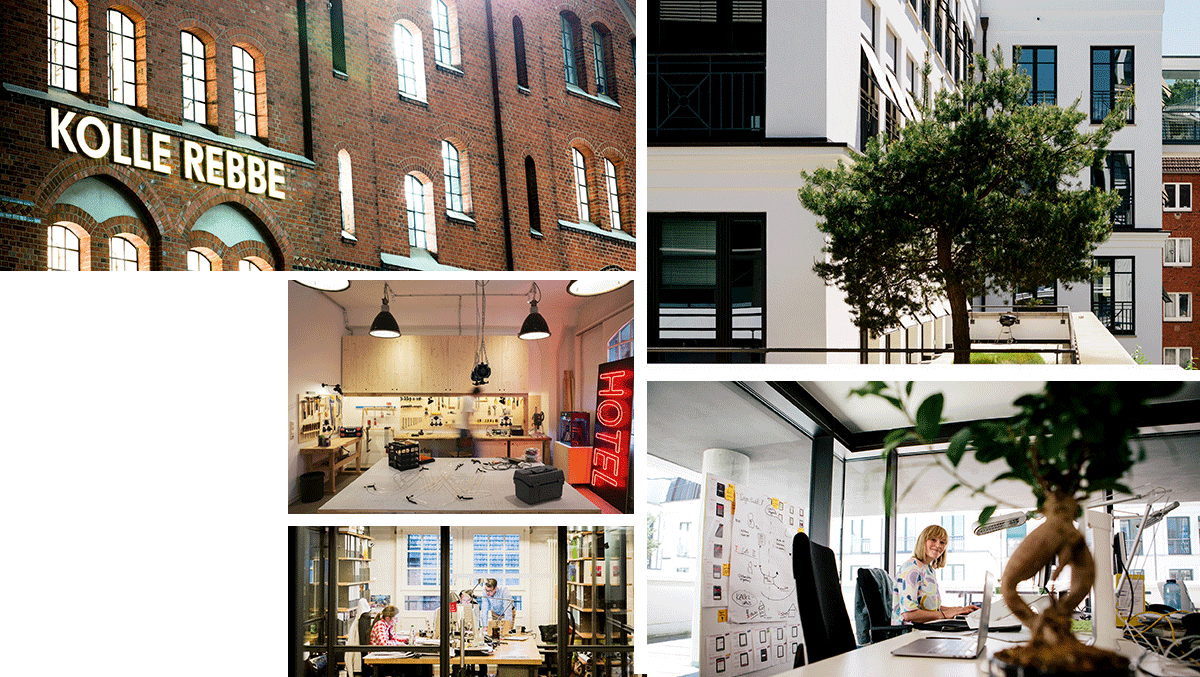
Next Agency Model:
Accenture Interactive: A Goliath as a Start-up
Accenture Interactive wants to build the marketing service provider of the future. For this purpose, the consultancy giant has acquired 36 agencies. But how do you turn a conglomerate like this into a functioning operational entity? We look for clues in Dublin, London and Hamburg.
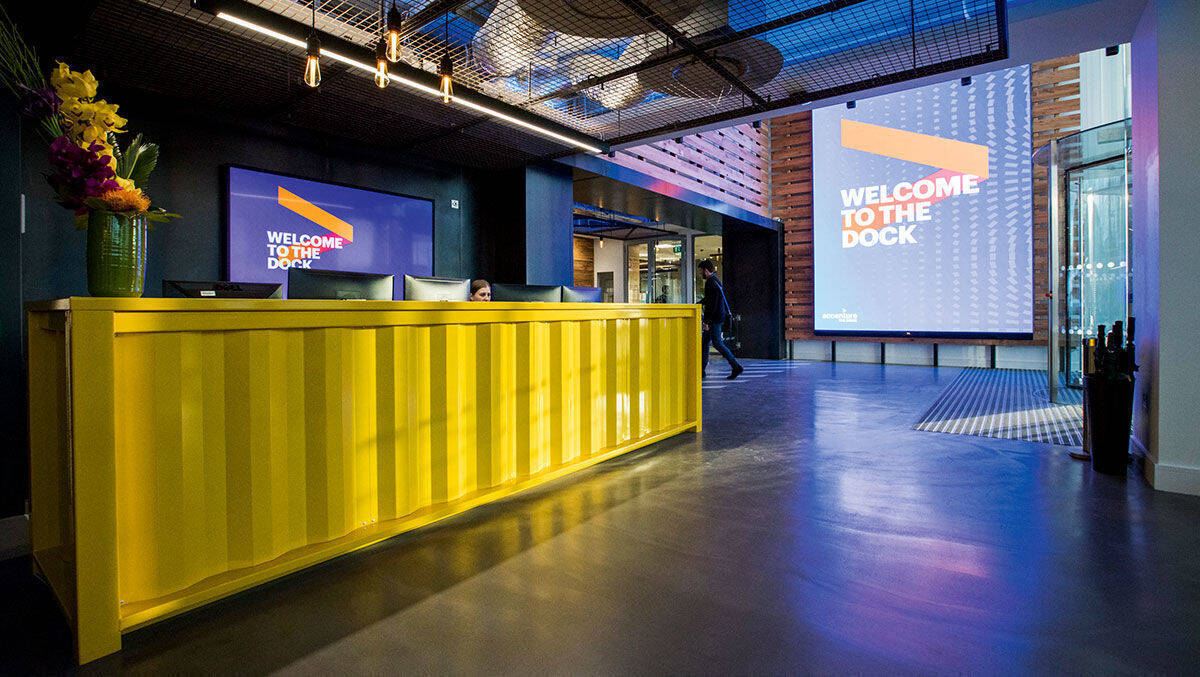
Foto: Naoise Culhane
With “JFK Unsilenced”, the Irish creative agency Rothco scooped up seven Lions in Cannes last year, including the Grand Prix and Gold. Competing with campaigns from all around Europe, this project on behalf of the The Times received the second-highest number of creative awards. Accenture Interactive had acquired the Dublin agency half a year before this triumph. A lot has changed for the 150 Rothco employees since then.
Zur deutschen Version
The turning point took on physical form for them when they moved into the new Accenture Interactive & Rothco Studio on Haymarket – not far from the old Jameson distillery in the Smithfield district. That was in June last year. Disguised behind a completely unremarkable façade, the building now houses trendy new agency offices. 183 creative, strategic, technology and data experts share office space here. 30 came from Accenture Interactive, 150 from Rothco and a handful from Boomerang, a healthcare and life science agency from Basel with a field office in Dublin.
Agency in Dublin
Dublin is one of the first locations where the Accenture vision for a symbiotic combination of creativity and technology has already become a reality. This is where the consultancy giant opened its international research and development center “The Dock” with 300 employees at the start of 2017. In December of the same year, it then acquired the 150-person creative agency Rothco. The creative professionals now share a building with 30 Accenture Interactive staff, along with a handful of employees from Boomerang, a healthcare agency from Basel with a field office in Dublin. The photo shows Richard Carr (managing director of Rothco) and Tracy Duffy (Boomerang Ireland Lead).
Without the Accenture’s technology resources, it would not have been possible to implement “JFK Unsilenced” in this form. The project used artificial intelligence to enable us to listen to the speech that John F. Kennedy intended to give on the day of the attack in Dallas – in his original voice. “The greatest speech never made.” That got under people’s skin.
“Eleven of the 13 Cannes Lions that Rothco has won to date come from the time after the acquisition,” says Richard Carr, managing director of the agency. This must be more than just a coincidence. Dublin is one of the few locations where Brian Whipple’s vision for a symbiotic combination of creativity and technology has already become a reality. The CEO of Accenture Interactive is counting on mixed teams that bring together creative professionals, tech experts and customer representatives. These teams are to be assembled based on the client’s needs.
For Anatoly Roytman, who is responsible for EMEA and Latin America at Accenture Interactive, this also means that – despite its size – the company sees itself as a start-up. Team thinking is therefore extremely important, including at the top management level. This is why there are regular meetings between Whipple, Roytman, Rainer Balensiefer (COO for Europe) and Matthias Schrader (head of the German-speaking region). “We learn from one another,” says Roytman. One of the key features of these times, he says, is that the world is constantly changing. For this reason, companies need to keep evolving and stay in start-up mode.
According to Schrader, the key task is to develop a new type of agency. One that enables clients to fully commit to the concept of the best possible customer experience. There is no blueprint for this yet, he says. “We are building something that has never existed before.”
“People sometimes don’t realize the scale we are operating on,” says Whipple. “We want to reinvent the experience for our clients. Advertising is part of this.” The conditions for this are not bad. Accenture’s resources make a lot of things easier. Including when it comes to the clients. At a time when trust is playing an increasingly important role, this kind of connection is a big advantage, thinks Schrader: “Accenture stands for trust.”
Editorial recommendation:
Blow up the dog, Part 1: Start of Marcus John Henry Brown's new series about the fictional organization Black Operative Department
Rothco is a prime example of the type of agencies that Accenture was interested in and will continue to be interested in as it continues on its chosen path. “An agency that is on the market for acquisition usually doesn’t come into question for us” says Whipple. Instead, Accenture observes potential candidates over long periods and holds in-depth talks. There needs to be a shared basic understanding, which includes being aware that creativity these days means much more than a great slogan and an appealing look. A process that took place long ago at Kolle Rebbe in Hamburg, for example.
Creative Professionals need an Enviroment where they feel Comfortable
Agency offices must always be designed to make this possible. Like at Rothco, whose offices are very function-al and open. Despite the general open-plan design, there are plenty of spaces available for holding discussions or meetings in small or large groups. There is even a large auditorium.
Fittings and amenities play a key role. Accenture knows that creative professionals would find it completely impossible to work in dreary consultancy offices. They need a different kind of work environment. One where they feel comfortable. So they are provided with an environment like this. At the new Rothco offices on Haymarket, a special area has been set aside for agency staff to exhibit their personal work. In a regular rotation so that everybody gets a turn.
Agency in London
The international rise of Accenture Interactive is inextricably linked with two milestone acquisitions in London: the service design agency Fjord (2013) and the creative hotshop Karmarama (2016). A year and a half ago, Fjord moved into new offices right next door to Karmarama by Farringdon station.
It is essential for close communication between creative professionals and techies to take place. In Dublin this is particularly easy, as Accenture’s Global Innovation Centre is headquartered just three kilometers away from Rothco, in the Docklands. At this research and development center, also known as “The Dock”, 300 design and technology experts work with customers to develop technical prototypes and innovative business solutions. Just recently, Rothco launched a start-up challenge in cooperation with the future lab, offering to take on the role of an incubator for the winning team.
Accenture opened “The Dock” in early 2017. In the renovated docklands area, companies such as the European headquarters of Google, Facebook, Airbnb, LinkedIn and Twitter are all close by – with several thousand employees. There is particularly close communication between Accenture and Google. As part of a strategic cooperation, the partners work on business solutions for transforming the customer experience. This is about improved data management and hyper-personalized advertising.
For example, Rothco developed an international campaign for the relatively new cider brand “Orchard Thieves” (Heineken) that was issued in completely different forms in the 22 markets where the brand is currently offered. Depending on whether the markets are mature ones with strong competitors or young ones where cider is not very popular yet, different content and a very different type of visual design are used. Sometimes matter-of-fact and product-related, sometimes cheeky and emotional. Only the trademark fox symbol is always the same. Such varied campaigns would have been unimaginable in the past. A total of 37 employees were involved in the development and implementation of the “Orchard Thieves” campaign.
But nowadays, it is less often about campaigns than it is about a convincing brand experience across all touchpoints. Brand communication in the traditional sense is encountering growing demand from consumers. “Meeting the expectations of today’s consumers in a meaningful way is the biggest challenge currently facing clients and agencies,” says Jon Wilkins, executive chairman of Karmarama, a London-based creative agency purchased by Accenture in 2016.
The acquisition of this 250-person agency headquartered near Farringdon station represented a milestone – three years after the first major acquisition. Accenture had set the course when it purchased Fjord, a service design specialist from London, in 2013: The focus here was on innovation design. A year ago, Fjord created a stir with an innovative surgical robot for the J&J subsidiary Auris Health: The “Monarch” offers a completely new type of user interface for surgeons and their assistants.
Helping Customers develop In-House Capacity
Another focus area is supporting companies with the development of in-house capacity. For example, Fjord established a 60-person in-house design agency for Commerzbank that now handles all the bank’s digital products. Similar work is being done with Arla Foods, where Karmarama secured the global digital budget at the start of the year. Here, the content production and media areas are to be interlinked in a new in-house agency with the aim of making advertising more personalized and continuously optimizing campaigns.
For Royal Bank of Scotland (RBS), Accenture Interactive went one step further and created a completely new, digital-only bank for millennials (“Bó”). Fjord handled the development work, while Karmarama dealt with communication and the programmatic campaign for the launch. Since March 2018, the two agencies have shared the same building in London.
Agency in Hamburg
The digital agency Sinner Schrader has been part of Accenture Interactive since early 2017. This 600-person company was Accenture’s first big acquisition in Hamburg. The second followed in November 2018 when the creative agency Kolle Rebbe was purchased. Just recently, Mackevision, a Stuttgart-based specialist in computer-generated imagery (and also part of Accenture Interactive since 2018), moved into a building close to Sinner Schrader in western Hamburg with 35 employees. Kolle Rebbe is based in Hamburg’s historic warehouse district. The three agencies work together to support the car manufacturer Audi.
The marketing of the future requires a complete reorganization on the part of clients. Agencies are increasingly struggling even to get all the responsible contact persons around one table. After all, the issues that are now involved are affecting more and more departments: from marketing, sales, product development, digital, media, PR and data protection officers through to the legal department and purchasing.
Helping companies with reorganization is one of the traditional areas of expertise of Accenture with its 492,000 employees worldwide. Until a decade ago, consultants did not focus on marketing issues. But the digital transformation has essentially turned marketing into a key element of every business. That’s why Accenture Interactive – the agency arm of the consultancy giant – was founded back in 2009. Without marketing in its DNA. But it soon became clear that something crucial was missing.
Thanks to the 36 acquisitions undertaken since 2013, the conditions are completely different now. Fjord, Karmarama, Sinner Schrader, Mackevision, Rothco, Kolle Rebbe and Droga 5 are just a few of the agencies that Accenture has taken under its wing since then. The consultancy group is moving closer and closer to its goal. For three years already, the US specialist magazine Ad Age has ranked Accenture Interactive as the world’s biggest digital agency.
Integration of so many Agencies doesn't happen without Conflicts
Almost all of the founders of the companies purchased are still on board. It is important to Accenture for them to keep managing their agencies while also fully committing to the shared vision.
The decision as to which name the company will use in which country depends on the strength of the individual agency brands. In the long term, however, they are all expected to sail under the Accenture flag.
When it comes to integrating so many different agencies, conflicts do of course occur. Not every employee likes suddenly just being part of something very big when that wasn’t what they were used to before.
EMEA and Latin America head Anatoly Roytman’s job is to manage complexity. Each and every day. His declared goal is to preserve the uniqueness of each team. At the same time, it needs to be clear to the creative professionals that they are integrated into something bigger. For Roytman, it is a question of continuously improving the services offered by the group and preventing “cannibalization” between the individual agencies. Because one thing is clear: In the end, it is about holistic solutions for major customers. “When building a house, you can’t do anything without an architect and a general contractor. This is what we see as our role,” says Roytman. “It is not necessary to do everything ourselves, but it is important to have good knowledge of all the trades involved.”
“For our customers, there is only one invoicing party in the end: Accenture,” says COO Balensiefer. Everything at the consultancy giant goes through a single profit and loss account. “Cooperation is deeply rooted in the corporate culture and the management systems – in line with our clients’ needs.” This turns out to be a clear advantage. After all, one of the main reasons why the world’s biggest agency holding company WPP fell into a serious crisis was that complicated profit center structures and corresponding management remuneration models got in the way of constructive cooperation between the agencies. This is not to be the case at Accenture Interactive. The simpler, the better.
This article was first published - in German language - in W&V magazine issue No. 11.1/2019 (you can here order the issue).
